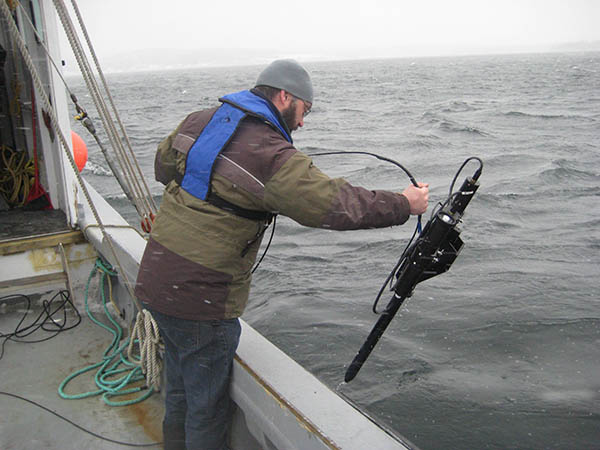- PRODUCTS
- MODEL LIST
- APPLICATIONS
- SUPPORT
- SALES/SERVICE
- BLOG
- ABOUT
Ocean Carbon Studies

One of the most intense areas of study in all of Earth Sciences is carbon cycling because of its potential influence in global warming and climate change. Natural waters contain large reservoirs of carbon that include pools of particulate organic carbon (POC) and dissolved organic carbon (DOC). Both of these parameters can been derived from IOPs, where typically POC is estimated from measurements of particulate attenuation or scattering and DOC is estimated from absorption measurements in the dissolved fraction or the fluorescence of humic substances. Since empirical relationships between biogeochemical properties and associated IOPs can vary due to changes in the composition of the dissolved and particulate pools, these relationships may be region- and time-specific.
Sea-Bird Scientific developed a special beam attenuation meter, as well as vertical profiling floats with sensors that measure light transmission, fluorescence, and backscattering to detect Particulate Organic Carbon (POC). This allows for the observation of carbon parameters on time scales related to biological carbon production and export. Floats can be used in validation of global climate/biogechemical models for particulate inorganics carbon (PIC) and particulate organic carbon (POC), and estimating net community production in the eupohotic zone and diurnal variability in the upper water column.
Case Studies
- Case Study - Paul Allen Foundation pH Sensors, Greg Ikeda, December 2018
- Case Study: Comparing ISFET and Glass Electrode pH Sensors Part 1: Stable Bath Test, Greg Ikeda, June 2018
- Case Study: High-Resolution Biophysical Observations in an Underway Sampling Application, Kim Martini, Sea-Bird Scientific, June 2017
- Case Study: Real-Time Data from NOAA PMEL Ocean Climate Station Moorings, Kim Martini, Sea-Bird Scientific, March 2017

